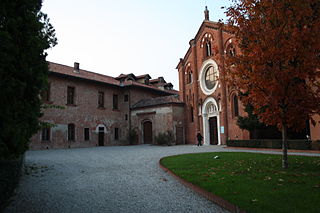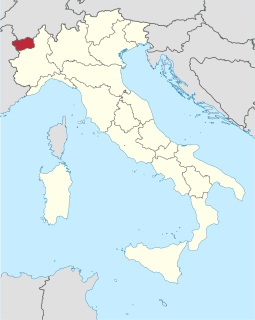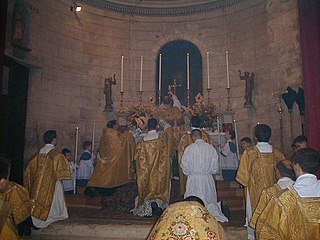
In Christianity, an abbess is the female superior of a community of nuns, which is often an abbey.

The Poor Clares, officially the Order of Saint Clare – originally referred to as the Order of Poor Ladies, and later the Clarisses, the Minoresses, the Franciscan Clarist Order, and the Second Order of Saint Francis – are members of a contemplative Order of nuns in the Catholic Church. The Poor Clares were the second Franciscan Order to be established. Founded by Saints Clare of Assisi and Francis of Assisi on Palm Sunday in the year 1212, they were organized after the Order of Friars Minor, and before the Third Order of Saint Francis. As of 2011 there were over 20,000 Poor Clare nuns in over 75 countries throughout the world. They follow several different observances and are organized into federations.
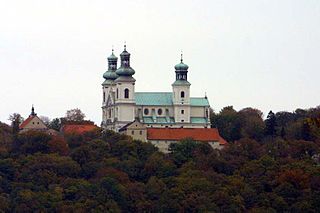
The Camaldolese monks and nuns are two different, but related, monastic communities that trace their lineage to the monastic movement begun by Saint Romuald.

The Order of the Most Holy Savior, abbreviated as O.Ss.S., and informally known as the Brigittine or Bridgettine Order is a monastic religious order of Augustinian nuns, Religious Sisters, and monks founded by Saint Bridget of Sweden (Birgitta) in 1344, and approved by Pope Urban V in 1370. There are today several different branches of Bridgettines.
A double monastery is a monastery combining a separate community of monks and one of nuns, joined in one institution. More common in the monasticism of Eastern Christianity, where they are found since the 4th century, in the West the establishment of double monasteries became popular after Columbanus and were found in Anglo-Saxon England and Gaul. Double monasteries were forbidden by the Second Council of Nicaea in 787, though it took many years for the decree to be enforced. In a significantly different way, double monasteries were revived again after the 12th century, when a number of religious houses were established on this pattern, among Benedictines and possibly the Dominicans. The 14th-century Bridgittines were consciously founded using this form of community.
The Benedictine Abbey of Regina Laudis was founded in 1947 by Mother Benedict Duss, O.S.B. and Mother Mary Aline Trilles de Warren, O.S.B. in Bethlehem, Connecticut. This monastic foundation was one of the first houses of contemplative Benedictine nuns in the United States. Mother Benedict and Mother Mary were both nuns of the Benedictine Abbey of Notre Dame de Jouarre in France. Mother Benedict had grown up in Paris and studied medicine at the Sorbonne. Until the monastery of Regina Laudis gained abbatial status, it was a dependent priory of Jouarre Abbey, a 7th-century monastery northeast of Paris, France.
St Mary’s Abbey, also known as Malling Abbey, is an abbey of Anglican Benedictine nuns located in West Malling, Kent, England.

Prior, derived from the Latin for "earlier, first", is an ecclesiastical title for a superior, usually lower in rank than an abbot or abbess. Its earlier generic usage referred to any monastic superior.

The Vallumbrosan Order is a Roman Catholic religious order, technically a Benedictine congregation, which derives its name from the motherhouse, Vallombrosa, situated c. 30 km from Florence on the northwest slope of Monte Secchieta in the Pratomagno chain. They use the abbreviation O.S.B. Vall., the Vall. to distinguish themselves from the Benedictines, who use the abbreviation O.S.B.

Stanbrook Abbey is an abbey originally built as a contemplative house for Benedictine nuns. The community was founded in 1625 in Cambrai, Flanders, then part of the Spanish Netherlands, under the auspices of the English Benedictine Congregation. After being deprived of their abbey during the French Revolution, the surviving nuns fled to England and in 1838 settled in Stanbrook, Worcestershire, where a new abbey was built. The English Benedictine congregation relocated to Wass in the North York Moors National Park in 2009. The Worcestershire property is currently operated as an events venue.

The Abbey of Our Lady of the Mississippi is located near Dubuque, Iowa. The nuns there are members of the branch of the Order of Cistercians of the Strict Observance, commonly referred to as Trappistines. They are a part of the Catholic Church in the Archdiocese of Dubuque.
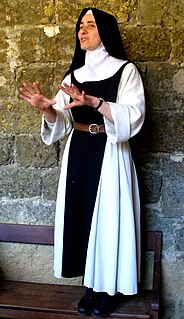
Cistercian nuns are female members of the Cistercian Order, a religious order belonging to the Roman Catholic branch of the Catholic Church.

Saint Mary's Abbey in Colwich, Staffordshire is an English community of Roman Catholic nuns of the English Benedictine Congregation founded in 1623 at Cambrai, Flanders, in the Spanish Netherlands. During the French Revolution, the community was expelled from France and settled at The Mount, Colwich, in 1836, where it continues today.
St. Cecilia's Abbey, Solesmes is a Benedictine nunnery founded in 1866 by Dom Prosper Guéranger, the restorer of Benedictine life in France after the destruction of the revolution. It is located in Solesmes, Sarthe, and is the women's counterpart of Solesmes Abbey.

La Maigrauge Abbey or Magerau Abbey is a monastery of Cistercian nuns located in Fribourg, Switzerland, and founded in 1255. The abbey is situated on the Sarine River and lies on the border between French-speaking and German-speaking Switzerland. The community is bilingual.

Soleilmont Abbey is an abbey of Trappistine nuns situated in the forest and commune of Fleurus, at Gilly near Charleroi, Belgium, founded, according to tradition, in the 11th century, which became Cistercian in 1237. The nuns were expelled as a consequence of the French Revolution in 1796, but soon re-established themselves in 1802. The community became Bernardine in 1837, and Trappist in 1919.

The Abbey of San Guglielmo al Goleto is a Benedictine monastery in Sant'Angelo dei Lombardi, province of Avellino, region of Campania Italy.
A dependency, among monastic orders, denotes the relation of a monastic community with a newer community which it has founded elsewhere. The relationship is that of the founding abbey or conventual priory, termed the motherhouse, with a monastery composed of the monks or nuns of the new community, which is called the daughter house. In that situation, the abbot or abbess remains the ultimate authority for the affairs of the dependent priory, which is considered an extension of the founding house. This relationship will end at such time as the new community becomes fully autonomous in its own right.




